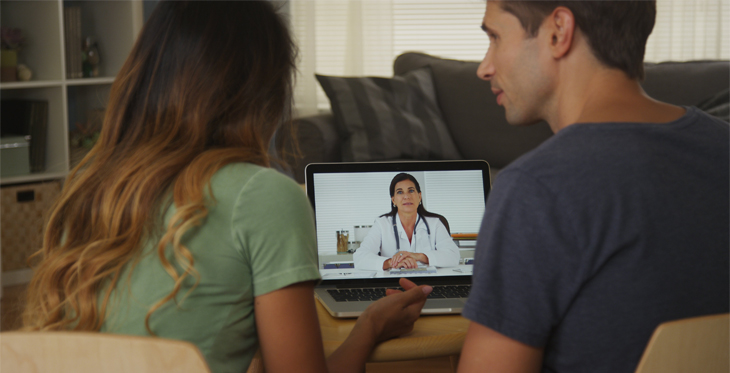Tuba City Embraces Telehealth for Diabetes Prevention and Care

In rural areas, telemedicine offers patients the opportunity to get specialty health services and physician consultations without the need for extensive travel. Rural telemedicine may be the great equalizer for rural populations, which typically experience reduced services and less favorable health outcomes compared to populations served by large medical centers.
Diabetes care is one area which needs improvement in rural Arizona. Patients frequently have to travel 1-2 hours one way in order to visit their healthcare providers. Generally, physicians like to see patients with diabetes at least four times per year. These patients also need to see a Nutritionist regularly, have eye and foot exams yearly, have blood sugar screenings regularly, and must come in for medication refills. All of these trips place a huge burden on patients, due to both time and transportation expenses.
A new project at Tuba City Regional Healthcare Corporation (TCRHCC) is expanding our telehealth services to include telenutrition and screening services for patients with diabetes, and hopes to also extend diabetes screening to far-flung communities on the Navajo Nation.
The project, which will begin in the fall of 2015, will utilize a mobile telehealth van to conduct health screenings, telenutrition visits, blood sugar and blood pressure checks, as well as other health services. It was funded by a one-time grant from the Special Diabetes Program for Indians in 2014.
It is my hope that patients will be able to get some of their regular diabetes checkups and screenings done via telemedicine, so that patients can reduce their trips to the hospital and still meet the standards of care. Initially, patients will still need to visit with their physicians regularly, but the burdens of frequent screenings, eye and foot checks, and nutrition visits will be eased by providing these services at Chapter Houses.
Challenges for Rural Telehealth
Major challenges for rural telehealth programs include the lack of infrastructure such as paved roads, Wi-Fi signals, cell towers, and sparse populations. It can also take time for populations to get comfortable with a novel program and utilize services to their maximum benefit.
With our mobile telenutrition program, the biggest challenge thus far has been the difficulty in assuring a reliable signal to accommodate video conferencing even in remote communities. We have run tests and simulations, but the ultimate test of signal strength will be when we drive the van out to the communities we intend to serve and attempt a stable video connection. A reliable and fast internet connection is a luxury that many on the Navajo Nation do not have yet. This lack of infrastructure has delayed the implementation of many worthy telehealth programs.
Another challenge has been accessibility of distant sites. Many of the communities we hope to serve are reached via dirt roads, and we needed to ensure that our new van would be able to handle a bumpy ride—despite its sensitive equipment. Again, the big test of our success will be when the van arrives, and can be road-tested.
These uncertainties with a major project always serve as a reminder of the difficulties of providing patients with the care they need despite the limitations in resources that are an unfortunate part of daily life in rural communities.
Future Opportunities
TCRHCC hopes to expand its telemedicine options in the coming years thanks to the improvement in facilities allowed by the grant. We have been offering telenutrition and telepsychiatry services to high schools in Tuba City, follow-up surgery and dermatology visits via telemedicine, and various educational opportunities for our medical staff. We are also establishing a telestroke program with the Mayo Clinic in Arizona.
Rural health providers and their patients would greatly benefit from telemedicine-based collaboration with larger health centers. A great model for this type of collaboration is the University of New Mexico’s Project ECHO. A similar project, which included pulmonology, rheumatology and other specialist care, would be of great benefit to Northern Arizona’s rural communities.
